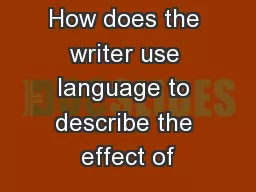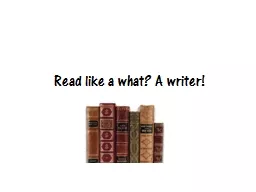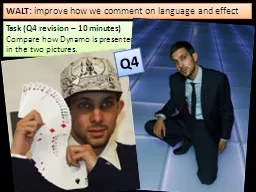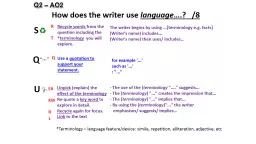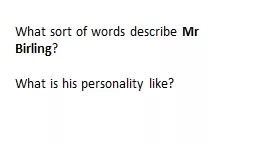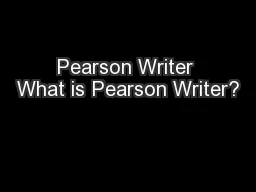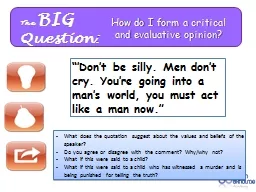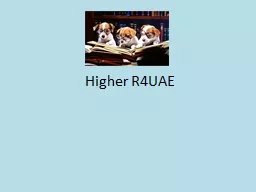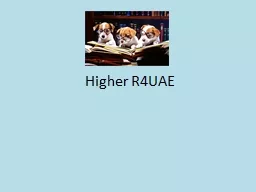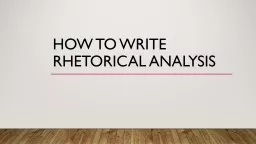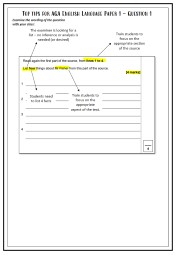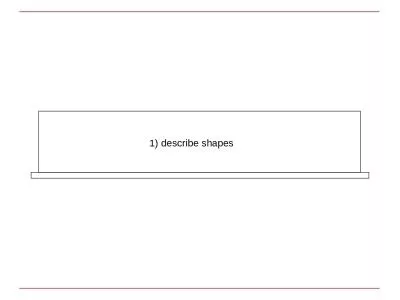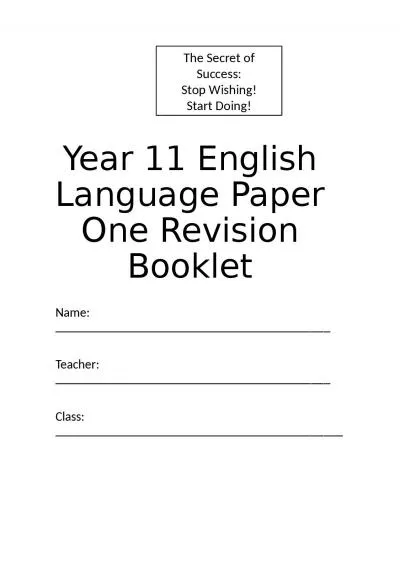PPT-How does the writer use language to describe the effect of
Author : conchita-marotz | Published Date : 2017-06-19
Include W ords and phrases L anguage features and techniques S entence forms Annotate the extract and write a PEELA paragraph in response to the question
Presentation Embed Code
Download Presentation
Download Presentation The PPT/PDF document "How does the writer use language to desc..." is the property of its rightful owner. Permission is granted to download and print the materials on this website for personal, non-commercial use only, and to display it on your personal computer provided you do not modify the materials and that you retain all copyright notices contained in the materials. By downloading content from our website, you accept the terms of this agreement.
How does the writer use language to describe the effect of: Transcript
Download Rules Of Document
"How does the writer use language to describe the effect of"The content belongs to its owner. You may download and print it for personal use, without modification, and keep all copyright notices. By downloading, you agree to these terms.
Related Documents

